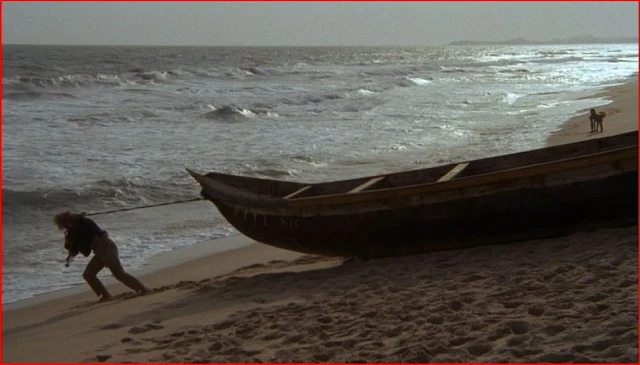 |
| Isabelle Adjani and Klaus Kinski in Nosferatu the Vampyre |
Cast: Klaus Kinski, Isabelle Adjani, Bruno Ganz, Roland Topor, Walter Ladengast, Dan van Husen, Jan Groth, Carsten Bodinus, Martje Grohmann. Screenplay: Werner Herzog, based on a novel by Bram Stoker and a film by F.W. Murnau. Cinematography: Jörg Schmidt-Reitwein. Production design: Henning von Gierke. Film editing: Beate Mainka-Jellinghaus. Music: Florian Fricke, Popol Vuh.
Werner Herzog's Nosferatu gets a little choppy in its efforts to blend both Bram Stoker's novel Dracula and F.W. Murnau's 1922 film Nosferatu. The latter was an "unofficial" version of the novel, which the producers neglected to obtain the rights to film, and it was almost suppressed. But the potency of Max Schreck's embodiment of Dracula (called "Count Orlok" in the Murnau film) remained, and it informs Klaus Kinski's makeup and manner in Herzog's version. Herzog did a lot of tinkering with the Stoker version -- Jonathan Harker's wife is Lucy, not Mina as in the novel, and Dr. Von Helsing is not the vampirologist of the book but rather an elderly scientific skeptic -- but he stayed generally faithful to it almost to the end, when he switched to the denouement of the Murnau film and then added his own shocker twist. The homage to Murnau is apparent not only in Kinski's imitation of Schreck, but also in Isabelle Adjani's performance as Lucy, which is built on silent-movie mannerisms, including effective use of her great haunted eyes. Even though it's full of images designed to shock and disgust, including a plethora of rats, Herzog's film is often quite beautiful, especially in the scenes set in the Carpathian Mountains (actually filmed in Slovakia and the Bavarian Alps) and the views of the quaint town called Wismar in the film, but actually shot in the town of Delft and several other villages in the Netherlands. The performances are all that they should be, including Bruno Ganz's determined Harker, whose character twist at the film's end seems organic to the performance, and Roland Topor's giggly Renfield, which often seems to parody Peter Lorre. Dracula is so familiar and fertile a source for movies that it probably will never receive a definitive version, but Herzog's makes a good bid for it.



